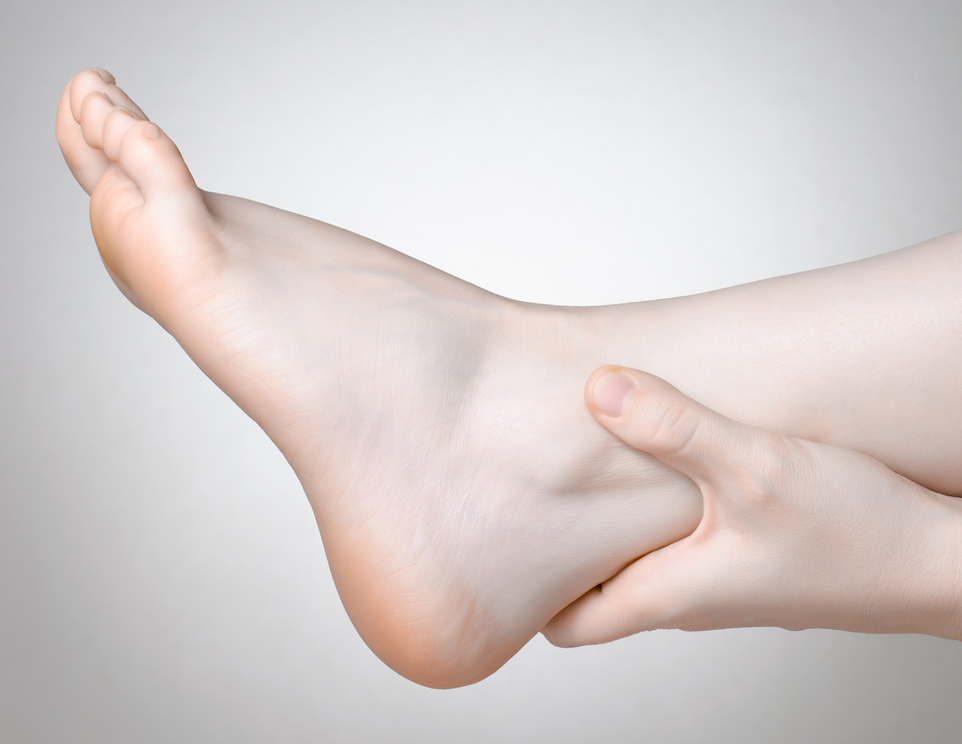
Introduction
Plantar fasciitis affects as many as two million Americans and is one of the most common causes of heel pain. It affects both active and sedentary people, and has been linked to a variety of conditions, though none are the definitive cause of the condition. Conditions thought to contribute to plantar fasciitis include:
- High arches
- Flat feet
- Over-pronation (Rolling in of the foot)
- Tight calf muscles
- Obesity
- Walking on hard surfaces
- Poor footwear
- Prolonged standing
- Tight achilles tendon
Treatment Options
Evaluated on the RESCU Rating Scale
R = Risk E = Effectiveness S = Self-Care
C = Cost U = Usefulness (overall rating)
1 = Least Favorable 5 = Most Favorable
| R | E | S | C | U(overall rating) | |
| Ice/Heat | 5 | 5 | 5 | 5 | 4 |
| Shock Wave Therapy | 4 | 3 | 0 | 2 | 3 |
| Laser | 5 | 2 | 0 | 4 | 3 |
| Cortisone | 2 | 2 | 0 | 3 | 2 |
| Orthotics | 5 | 3 | 5 | 4 | 4 |
| Surgery | 3 | 3 | 0 | 2 | 3 |
| Exercise | 5 | 4 | 5 | 5 | 4 |
WHAT IS PLANTAR FASCIITIS?
Perhaps surprisingly, no one is exactly sure. The plantar fascia is the strong connective tissue just under the skin of the sole of the foot. It travels from the heel bone (calcaneus) to the base of the toes and is a mixture of connective tissue and fat. PF was originally thought to be an inflammatory process (the “it is” in fasciitis) but recent studies indicate it is more likely to be a degenerative process, including tiny tears in the fascia or connective tissue, which over time weaken the connective tissue and produce pain.
Heel spurs are commonly associated with PF, but the causative relationship is unclear. Many people with PF have no heel spur, and patients with heel spurs do not necessarily have PF.
Treatment Options for Plantar Fasciitis
- Ice for Plantar Fasciitis
- Orthotics for Plantar Fasciitis
- Corticosteroid Injection for Plantar Fasciitis
- Exercise for Plantar Fasciitis
- Surgery for Plantar Fasciitis
- Shock Wave Therapy for Plantar Fasciitis
- Low-Level Laser Therapy for Plantar Fasciitis
Products for Treatment
Symptoms of Plantar Fasciitis
The most common symptom is pain in the bottom of the foot, usually near the heel, which is worst when getting out of bed or when standing after being off the feet for a while. Standing stretches the plantar fascia, causing pain which usually improves after walking for a few minutes. There is usually a tender spot on the bottom of the foot just in front of the bottom of the heel. Symptoms are often worse with prolonged standing or weight-bearing, and at the end of the day. PF usually affects only one foot, but is can affect both feet, and usually affects the back of the foot but can spread to involve the whole foot. It rarely is associated with tingling or numbness. Pulling the toes back or standing on tip-toes can aggravate the pain.
Plantar Fasciitis Diagnosis
Typically the diagnosis is made based on the history and physical examination. X-rays may be taken to see if there is a heel spur or to rule out other causes. Diagnostic ultrasound may be performed to look for heel pad thickening, characteristic of PF. MRI studies are typically not done unless other causes are suspected after a trial of conservative care. In any event, most cases resolve or improve within a year.
Sources:
Tahririan MA, Motififard M, Tahmasebi MN, Siavashi B. Plantar fasciitis. Journal of Research in Medical Sciences : The Official Journal of Isfahan University of Medical Sciences. 2012;17(8):799-804.
Schwartz EN, Su J. Plantar Fasciitis: A Concise Review. The Permanente Journal. 2014;18(1):e105-e107. doi:10.7812/TPP/13-113.
Home Care for Plantar Fasciitis
There are a variety of things you can do for yourself at home if you suspect you have or have been diagnosed with plantar fasciitis. These include:
- Rest! Put your feet up. Stop doing the activities which are aggravating your pain. If your job requires you to stand on a hard surface, such as concrete, for long periods, try using a cushioned pad.
- Use ice, heat or both. Start with ice. If it helps, great. If not, try contrast (heat then ice) or switch to heat.
- Use over-the-counter non-steroidal anti-inflammatory medication.
- Do stretches.
- Wear shoes with good support, or wear orthotics.
